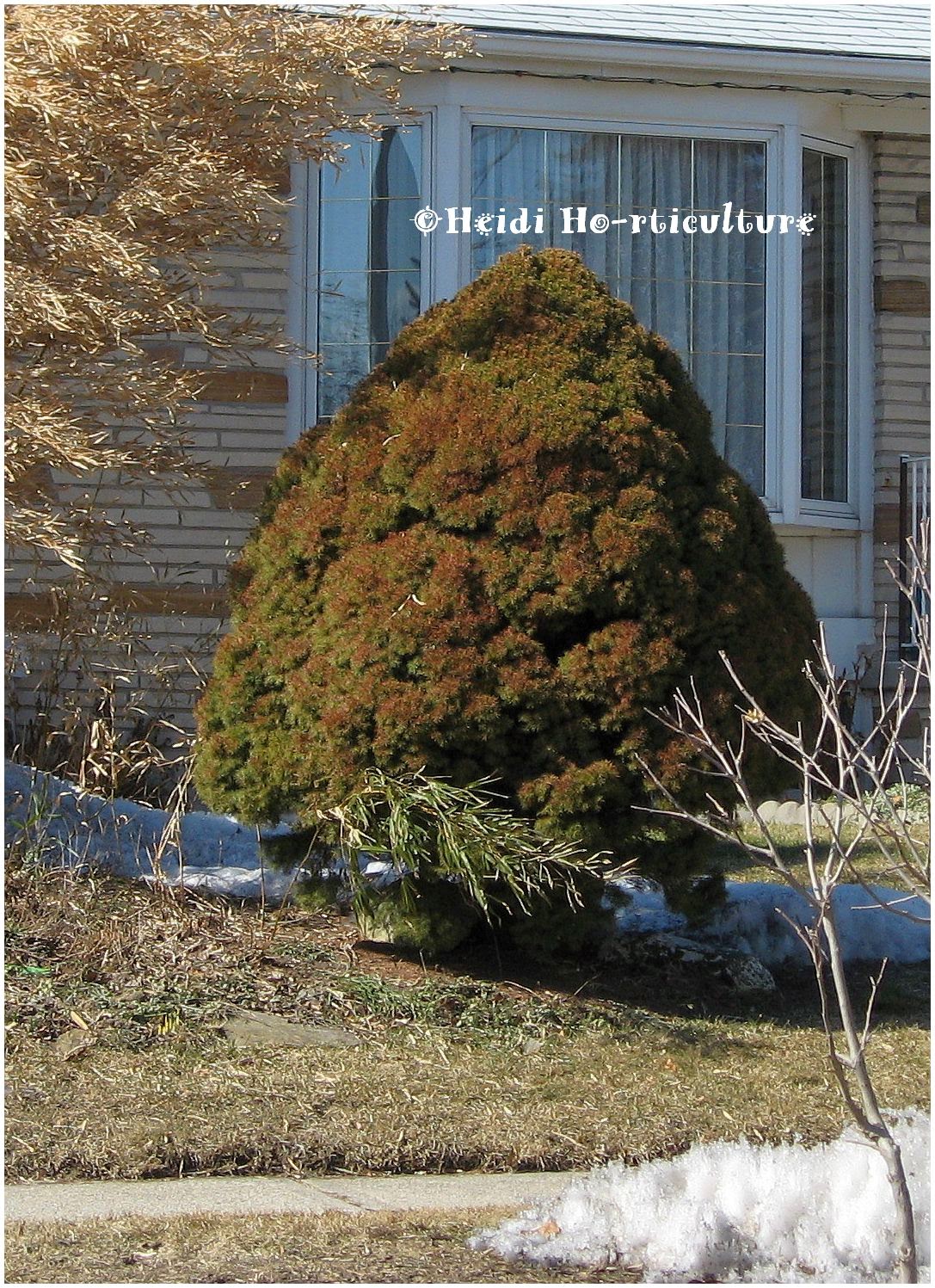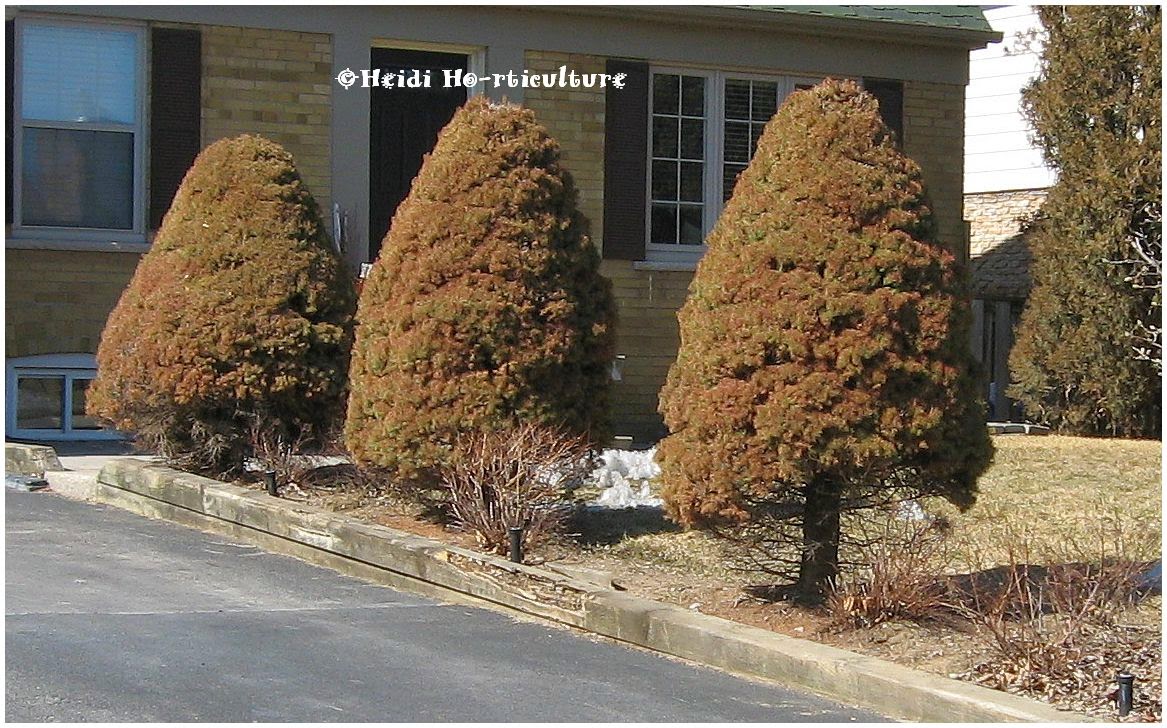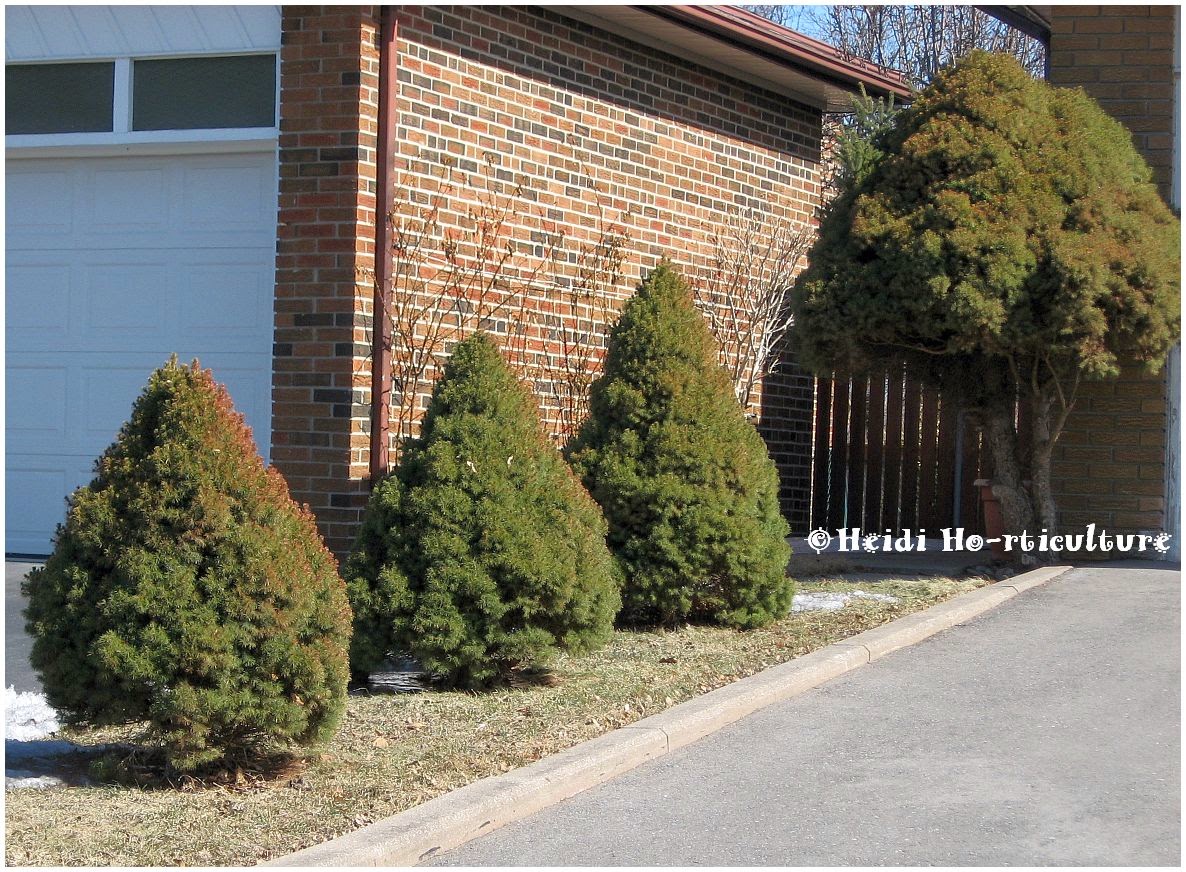Spring daylight, the intense sunshine and cold nights are showing side effects on some evergreens. I am saddened by winter-burn damage on Dwarf Alberta Spruce (Picea glauca conica). With the sun's rays bouncing off of snow too and below freezing temps at night, I'm afraid most of these conifers are burned on the sunniest side of exposure.
![]() |
| This is especially true for the south facing specimens shown here. |
![]() |
| No matter the size, and situation, all have been burned. |
![]() |
| Given some are situated nearest driveways, paved paths or the house, I'm afraid some will bear the burned needles for some time. |
What to do now? At closer examination, you should be able to see lateral buds nestled in the dense needle growth. Buds that should survive, as long as extremes in temperatures don't arise and adequate moisture in the soil is maintained. In May, buds usually unfurl to reveal soft, new needles. The burnt damaged remains eventually will fall off and hopefully if the plant has enough vigor, it will green up. Just be forewarned, in larger examples, evergreen foliage will take many years to plump up the shape and regain its former health. Be patient.
If the buds are unfortunately brown and dry to touch, well, I'm afraid the plant will not easily return to former health and shape.You may try to douse the Dwarf Alberta Spruce with heavy spray of water to loosen any needles and water the base to help it regain new bud growth. If we have a dry spring, this is crucial. You may lose the little conifer otherwise.
I sure hope that some of the largest sizes I saw today will bounce back. It's a shame to see these older specimens die.
How to avoid this:
Prevention is key.
![]() |
| If your garden faces south, please wrap your plant in late November, early December. I'm not a fan of burlap, but if it saves your Dwarf Alberta Spruce from burning, it's better than nothing. |
|
Other ways to avoid sun-burn:
- plant in more sheltered locations
- plant away from paths and driveways
- erect a screen or something to defuse the sun from shining directly on the plant over winter
- heap snow under the plant before it all melts, to help retain soil moisture
- plant alternatives
I hope, by June, much of these will have recovered.
Here is a great alternative to the common, unsightly look of burlap: From
NuVue Products - Lawn And Garden






